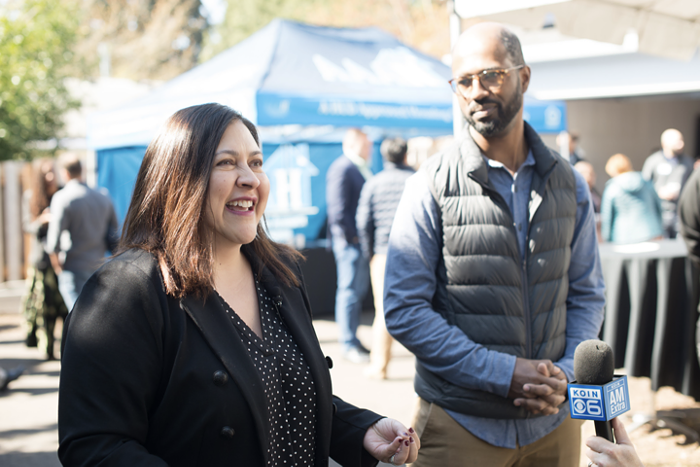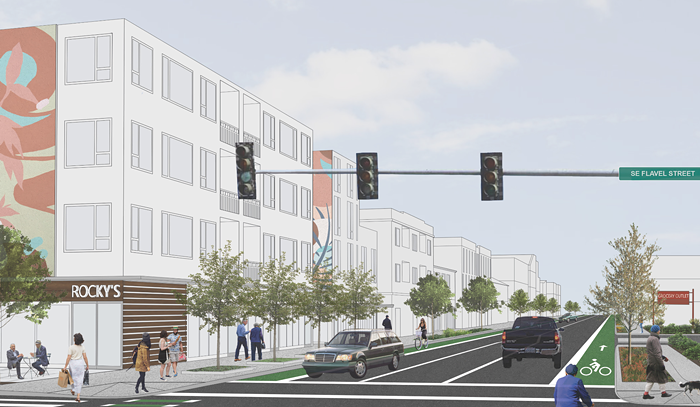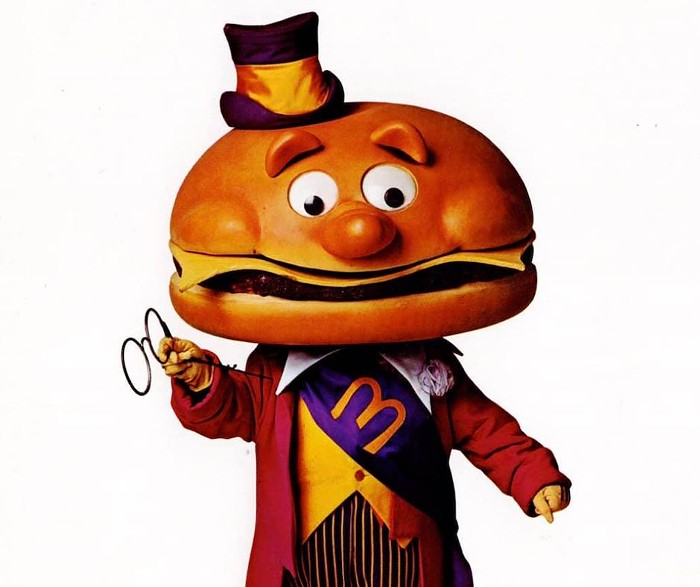It's 9:30 on a warm Saturday night when you see the bugle player take his place at center track. He is wearing white slacks, two inches too short, with a red jacket and hat. He marches out to his spot in front of the microphone with all the low-rent pomp and circumstance he can muster, and then belts out the "River Kwai". The song indicates there are three minutes left before post time, so you rush to the nearest mutuel window and slap two bucks down on Lucky Patti Cake to win.
You make it outside to the fence nearest the starting box just in time to see eight greyhounds burst onto the track. It's dark everywhere except for the floodlights that illuminate the oval, and you can see in great artificial detail the graceful muscles of each dog as they rip past you. Honky Tonk Girl, a brindle-colored female, beats the box and takes the early lead. Your pooch, Lucky Patti Cake, comes on after a slow start and begins to close in. You're on your feet, frantically slapping a rolled up program on your thigh as your girl takes the inside line along the rail. She seems to be gaining on Rusty, the mechanical lure that the dogs chase, until she crosses the wire and wins the race on her final stride.
THE BIG GUY
This is big time dog racing at the Multnomah Greyhound Park, just outside Portland in Wood Village. This year the MGP has been celebrating 70 years of dog racing in Oregon, with the past 56 taking place at its current locale. Carl Wilson, the GM for the park, as well as Portland Meadows, says increased competition from Oregon's growing gambling scene has slowed business some over the past 10 years.
"Every bar or tavern you walk into has video poker, and the Native American casinos have popped up all over, but we're still doing OK," says Wilson. "We still pack 'em in on Friday and Saturday nights, and for stake races we'll bring in 4,000 people."
Carl's office is located on the mezzanine level of the clubhouse, and it's everything you'd expect from the head honcho of a massive gambling operation. Everything from the wood paneled walls littered with old fight posters to the bank of closed circuit monitors, right down to the bronze and ceramic figurines of race dogs on his desk. Carl runs a tight ship, keeping an eye on each race, as well as those from around the country, and he is never far from his two-way radio. Even with the local competition, and the fact that dog racing is illegal in 34 states, over $11 million dollars was bet at the track last year. And that's not counting what was bet via closed circuit television from across the country.
IT'S A LIVING
Walking onto the main floor of the clubhouse, you can't help but get a little twinge of excitement. The place is gigantic, with beer and food served on each end and wagering booths lining the back wall. The rest of the room is filled with scattered chairs and a long orange Formica bar that runs along the floor to ceiling windows, perfect for leaning, drinking, and urging on the dogs from atop the track.
Most people in this room aren't even looking at the dogs as they are paraded by before each race. Instead, they are chain smoking--even though there isn't an ashtray in sight--with their noses in their programs. It's all numbers to the hardcore players; they're there to make a buck. They compare weights, race histories, bloodlines, and several other components listed on the extremely complicated programs (I'll try to explain the betting system later).
Watching the races from inside makes for a somewhat antiseptic feel, as you can't hear the dogs panting or the subtle thunder as they gallop by. Instead, you hear people grunting out numbers: 'Six! Six! Come on, six!' and then, the eventual sigh of defeat. Within two hours, the entire main floor becomes littered with ripped-up wager tickets left by those too disgusted to find a garbage can.
The second level is for the more seasoned bettors, the kind wearing polyester slacks and pinky rings. This is where the off-track monitors are located, and you can bet on races happening simultaneously in Miami, New York, and Del Mar. The parks all keep track of what was bet and where, and at the end of each week, they settle up, each getting its own small percentage. For the punters, the lifestyle gamblers, it provides an opportunity to place a bet every 120 seconds. There are rows of old schoolroom desks with just enough space for a stack of programs, a stiff drink, and an ashtray. Some people spend six hours a day, five days a week at the track. To them it's an honest living, and it beats the nine to five game that the rest of us play. Maybe they're right.
RUN, YOU MANGY CUR!
Before you risk any money on these sweet little pups, you need to know the basics. All betting at the track is pari-mutuel, which means that people are betting against one another--not the house. The track has no financial interest in the outcome of any given race; they just hold the stakes and make sure the winners get their share (with a small percentage skimmed off the top, of course).
The odds for each dog are based on how the crowd is betting. If a certain dog's odds are lower for a particular race, that means that a good portion of those wagering put their money on him to win. This doesn't mean that the dog has any solid chance of winning, it just means that your fellow gamblers think he does. And they probably know better than you.
The tote board, which sits on the far end of the track like a baseball scoreboard, tells you all the vitals for each race. It will list the odds for each dog, as well as two weights for the racers. One is the weight in, which is taken 90 minutes before the race, and the other is the weight at post time, measured just before each race. The significance of this is that there's a target weight for each dog, much like the weight classes in boxing. The catch weight is set by the kennel trainer as the peak performance weight for that particular greyhound. If a dog shows up over or under the catch weight, it may indicate the dog is out of shape or ill in some way. If any racer is plus or minus two pounds at post time, they will be scratched from the race to ensure the health and safety of the dog.
Before each of the 14 daily races, the dogs are led out by handlers for the bettors to get a peek at before putting money down. This is mainly for show, as all the stats you need are found on the programs. But this is one of the most enjoyable parts of race day; sizing each animal up, looking for strength and evenness of gait. It may have no bearing on the dogs' performance, but there is a certain kind of fun in picking a winner based solely on the beauty of its coat or the glint of mischief in its eye.
So now that you've seen the dogs and studied their movements and demeanor, it's time to get the skinny on these prized puppies. When you open a program for the first time, it's bound to throw you off. There are rows and rows of numbers, letters, and decimal points all telling you some secret and mythical history of each possible winner. Every single factor in a dog's potential ability is listed. This isn't because all of the individual statistics are entirely relevant, but more because each bettor has a personal system they think will lead them to riches. The most important figures on the programs are the last six finishes for each entry, the weight (heavier is better for the 550 yard sprints, lighter for the 670 yard runs), the previous finish times, and each pups' grade.
Each win advances a dog one grade, from E to D to C and so on. A dog will drop a grade if it fails to show (placing 1st, 2nd, or 3rd) in three consecutive races. And if a dog wins his or her maiden race, they will advance two grades from E to C. 'A' grade dogs are few and far between, and when they appear they are bet on heavily, which means their odds lower and the payout for a winning bet diminishes. Like anything in life, the long shot always pays the highest dividends.
Now you're ready to gamble. The three most basic bets are Win, Place, and Show. If you bet on a dog to win, that means the needs to place first. Betting to place means the greyhound must get 1st or 2nd and picking a dog to show means you expect a top three finish. Betting to win reduces your odds as opposed to a show or place bet, but the payout is higher if your wish comes true.
Things get a little more complex from here. You can go for the Daily Double, which often gets into the thousands, if you pick the winner of two consecutive races. A Quiniela wager means you pick the 1st and 2nd place dogs of a given race. Betting the Trifecta or Superfecta means you have correctly picked the 1-2-3 or the 1-2-3-4 finishers respectively. These bets are obviously more risky, but if you hit a winner you'll be buying drinks for your friends all night.
A ONCE-IN-A- LIFETIME DOG
Those who bet on the greyhounds aren't the only ones hoping to cash in. Dog racing is big business in the 14 states where it's legal, and just like the many that engage in betting, the people who own, train, and house the dogs inhabit their own subculture. The people involved in the 'product' aspect of the sport are the owners, trainers, and kennel managers.
A typical owner will purchase a greyhound at birth and raise it to about seven weeks. The pup will then be sent to a type of training camp, where it will learn to race. At 18 months the dog is ready for competition, and the owner will lease the miniature thoroughbred to a kennel which will manage it during its two-year career. The earnings will then be split, with 35% going to the owner and 65% to the kennel. A top dog can earn over $10,000 in a season, which runs here from May through October. The prize money can triple if the dog wins one of the several stakes races held around the country. The MGP hosts a $75,000 derby each year, the money saved up from a percentage of the wagering throughout the year. Along with the points a dog earns for placing in races during a season, the stakes races add a huge incentive for kennels and owners to find the perfect dog.
Silent Power is the current star at the MGP. He was the first dog to break the 30-second mark in the 550, and is the favorite for the remaining stakes races this year. Paul Coombs, Silent Powers' owner, beams with pride at what his dog has accomplished.
"He's a once in a lifetime dog," says Coombs, who also adds, "the dogs are only as good as the people working with them."
Dave Dasenbrock, of Dasenbrock Kennels, is Silent Powers' year-round caretaker and trainer, along with 107 other racing dogs. It's a lifestyle as well as a career, and the kennel has four full-time staff that travel with the dogs to Florida in the winter to race. Once spring comes in the northwest, they pack up and return to Oregon for the coming season. The kennel staff often works 18-hour days, but the money earned by the greyhounds is more than enough to keep them in business. Kennels earn points determined by their dogs' placing throughout a given week. Based on what's bet for that week, a dollar amount is assigned to each point. For example, if a dog earns thirty points over a week, and the track gives $40 per point, that's $1200 to be split by the kennel and owner.
DOGS HAVE RIGHTS, TOO
Several animal rights groups have been fighting for an outright ban on dog racing, citing poor care of the dogs during their racing life, and inhumane disposal of greyhounds past their prime. House bill 3928 would have ended racing in this state, but it didn't receive a hearing last year. Supporters hope to see the measure on an initiative ballot soon.
Of the approximately 1,500 kennels nationwide, only about half are inspected each year. And, while the Oregon Greyhound Covenant states that all racing dogs live in 'comfortable, clean, safe, and well ventilated shelters,' this doesn't mean they aren't kept in stacked cages for hours at a time without any contact or affection from humans or other dogs. All of the owners and kennel staff I met seemed to have a genuine love for their dogs, but I also heard the term 'farming' used several times in reference to raising puppies.
What soothes my wariness is the non-profit work that the track does to find retired greyhounds suitable homes. The branch is called Fast Friends, and last year they successfully places 356 dogs with adoptive families. About 800 dogs race each year, and if you assume half will race the following season, most if not all Oregon racers find homes. Greyhounds are gentle pets, and if you're interested in adoption the park is holding meet-and-greets on September 21st and October 19th.
A NICE VICE
What separates greyhound racing from other forms of gambling is its accessibility. It is completely devoid of the snobbery that often comes with the high stakes world of horseracing, which is full of blue blazers, chiffon dresses, and Southern aristocrats. And, unlike casinos, you are not trapped inside a windowless maze of sinful vice. What you get instead is blue-collar gambling (you can bet on every race and drink three beers for under $40) combined with the thrill of watching these amazing creatures fly down the track at 45 mph.
Celia Shadburne, a 23-year-old cowgirl from Portland's Eastside, just spent her first day at the track and can't hide her excitement about what she's just seen.
"It's a hoot picking a dog and watching it win," says Shadburne, adding, "It's a very seedy kind of fun."
The season runs through Oct. 13th, with post time at 7 pm race info is available at the track, located at 944 NE 223rd, 667-7700.


















